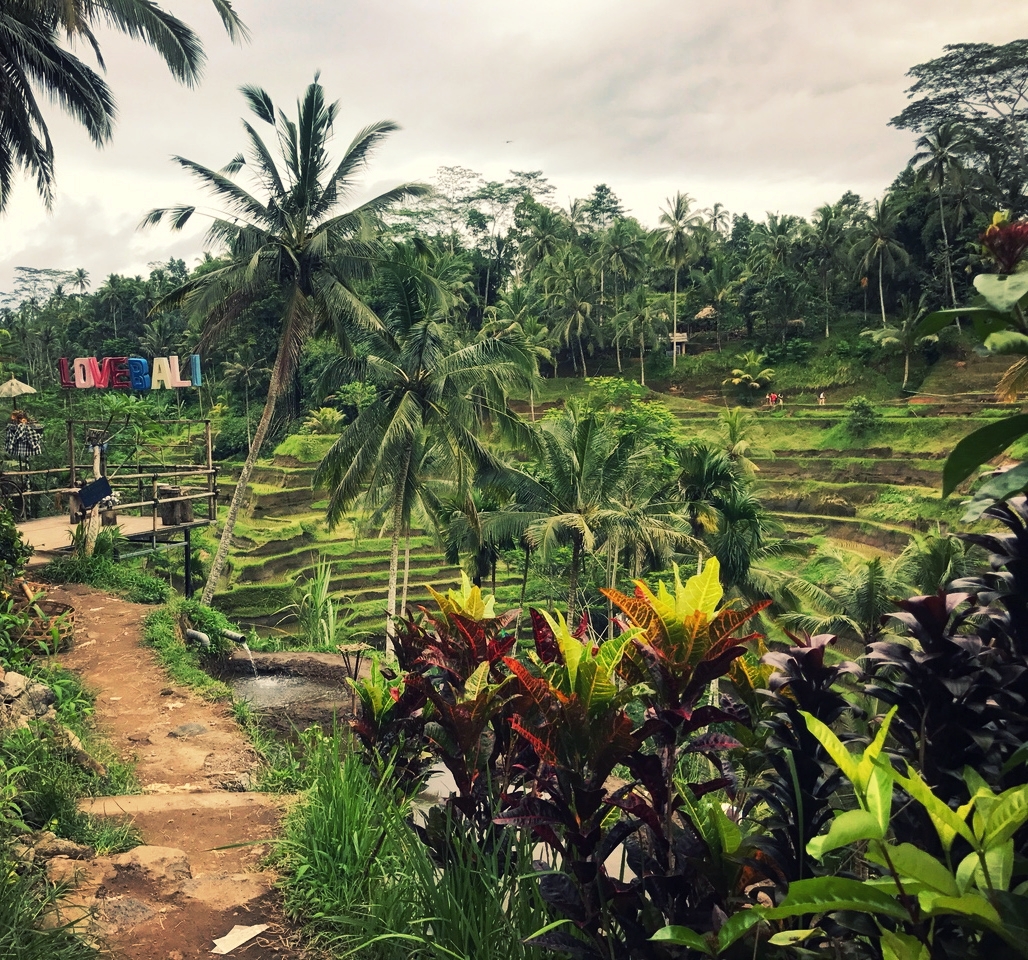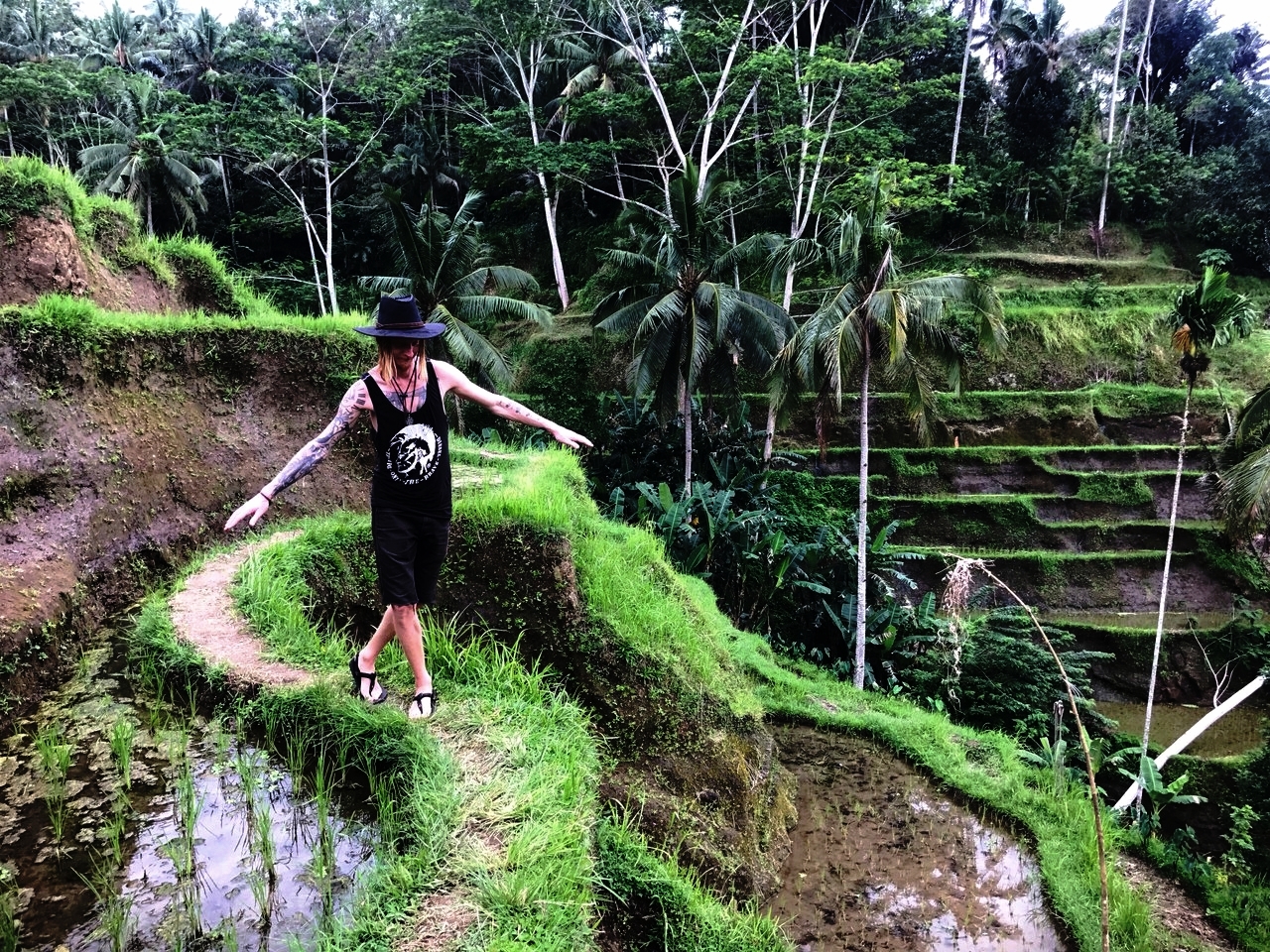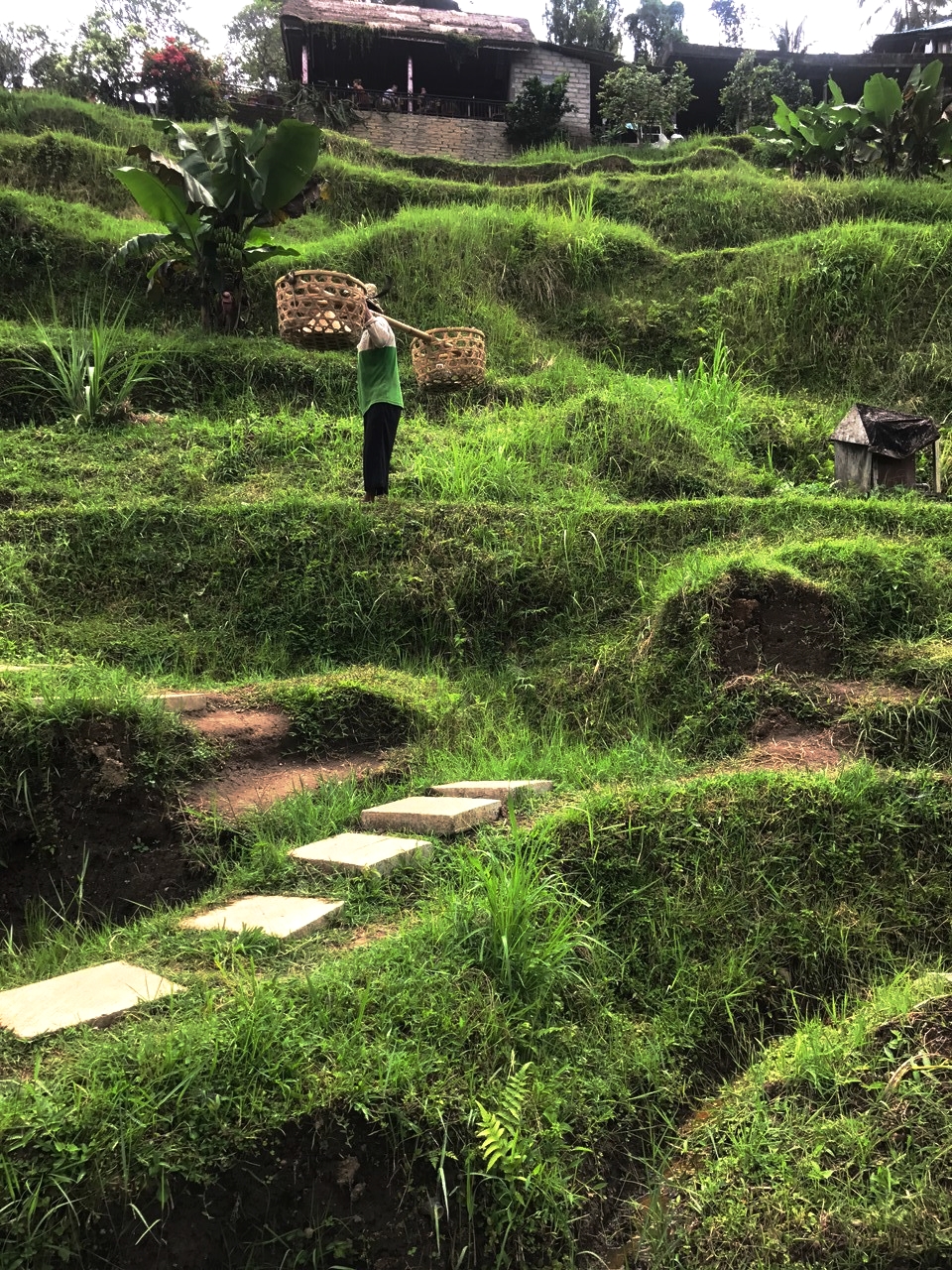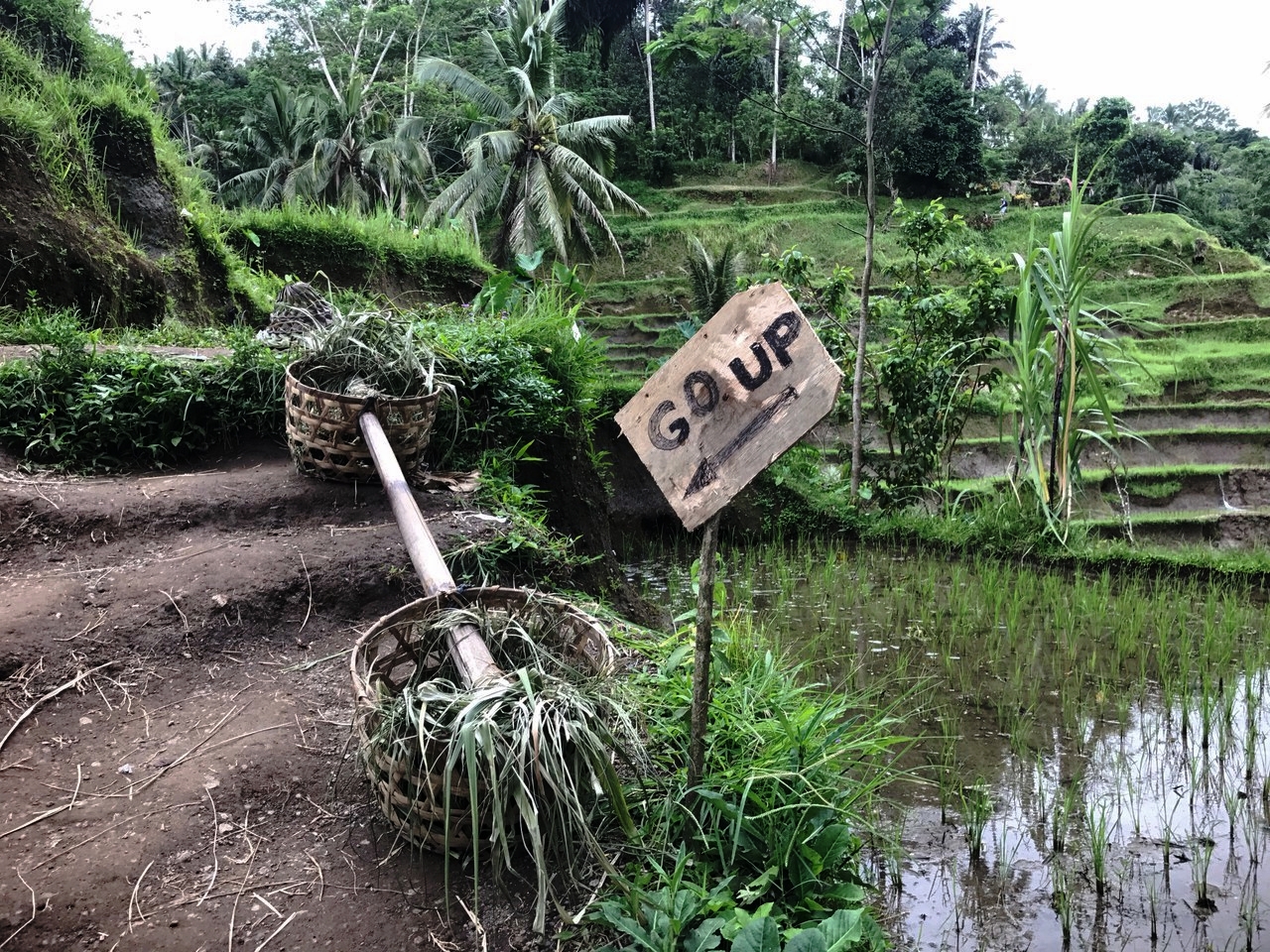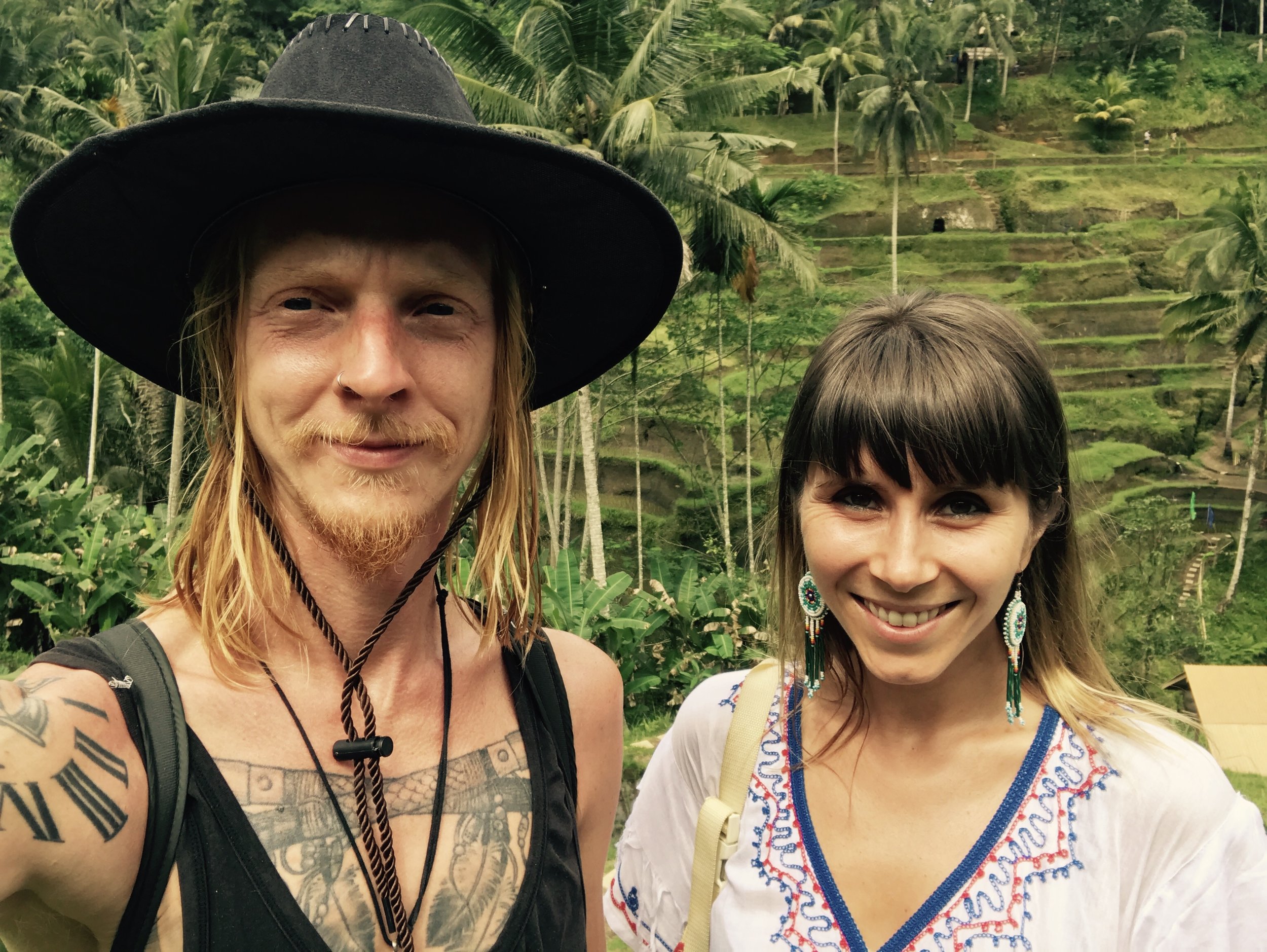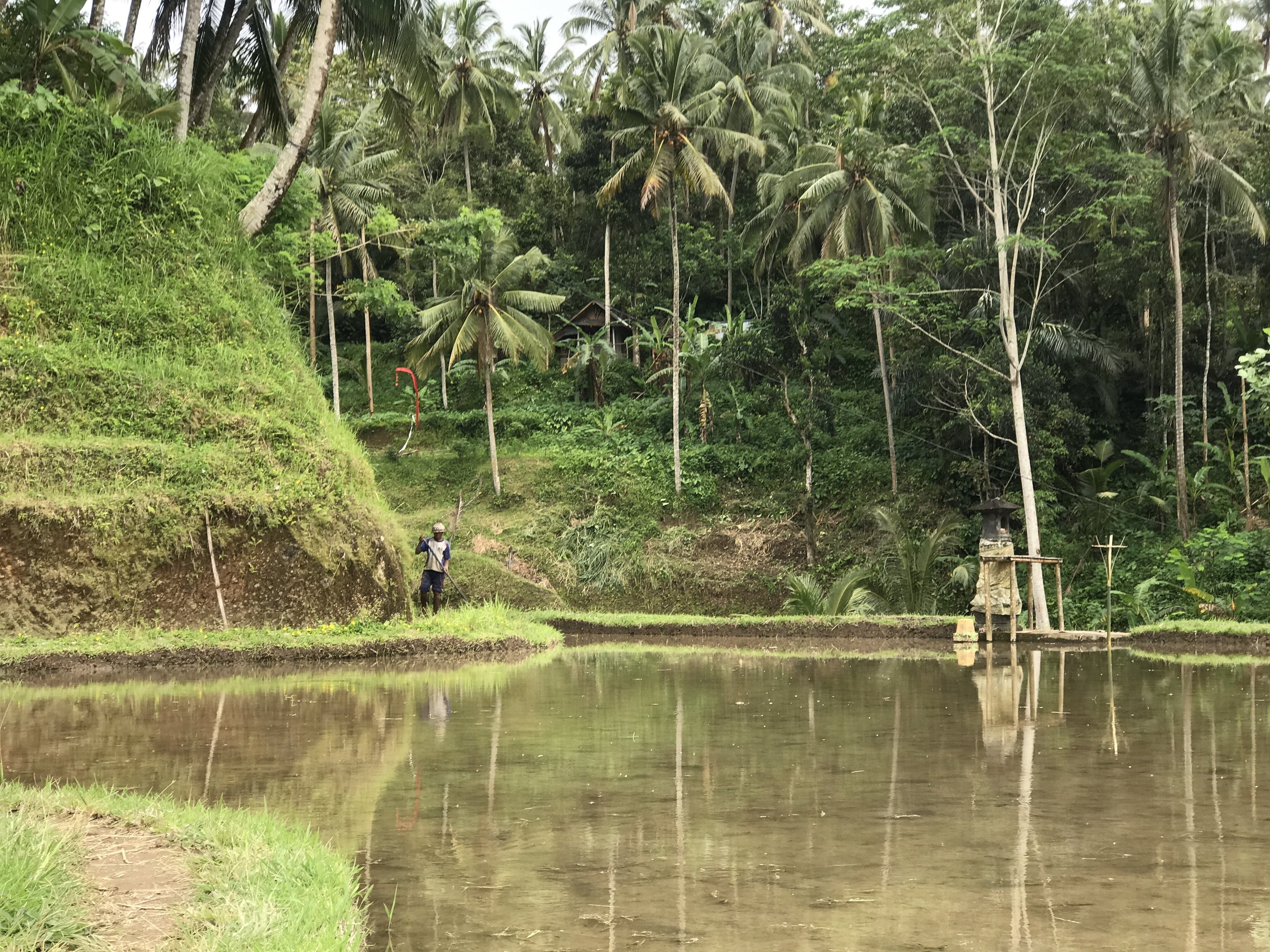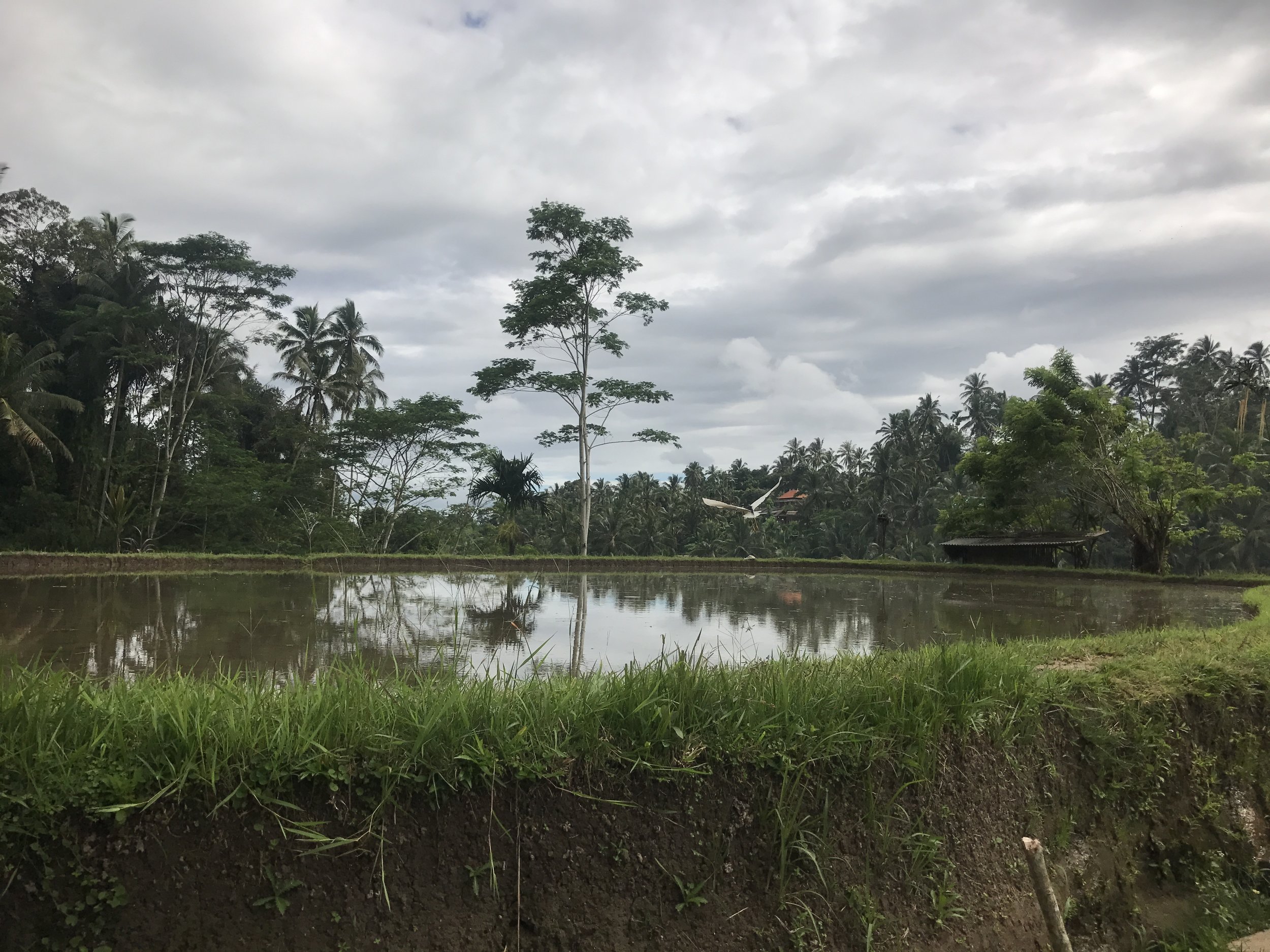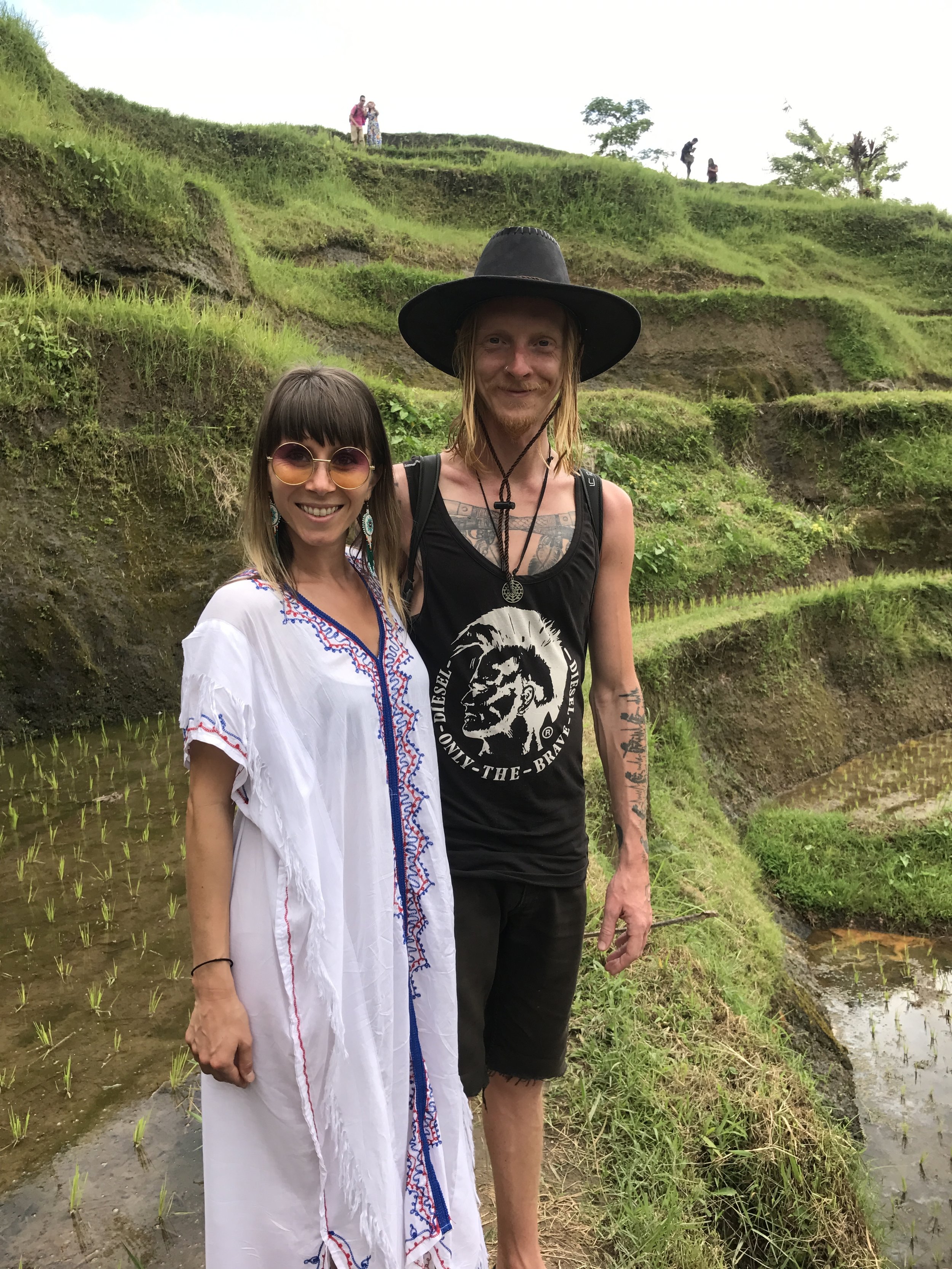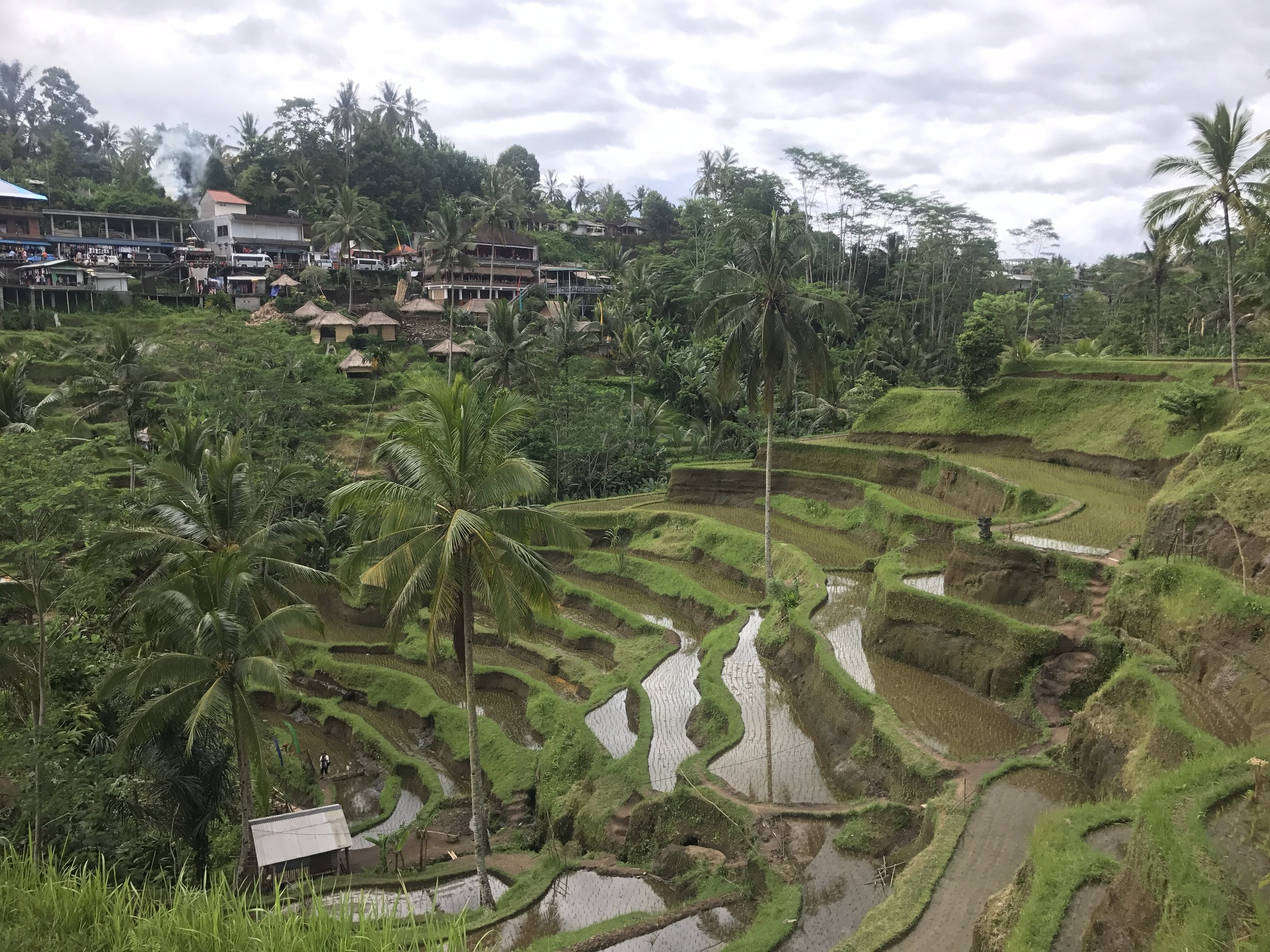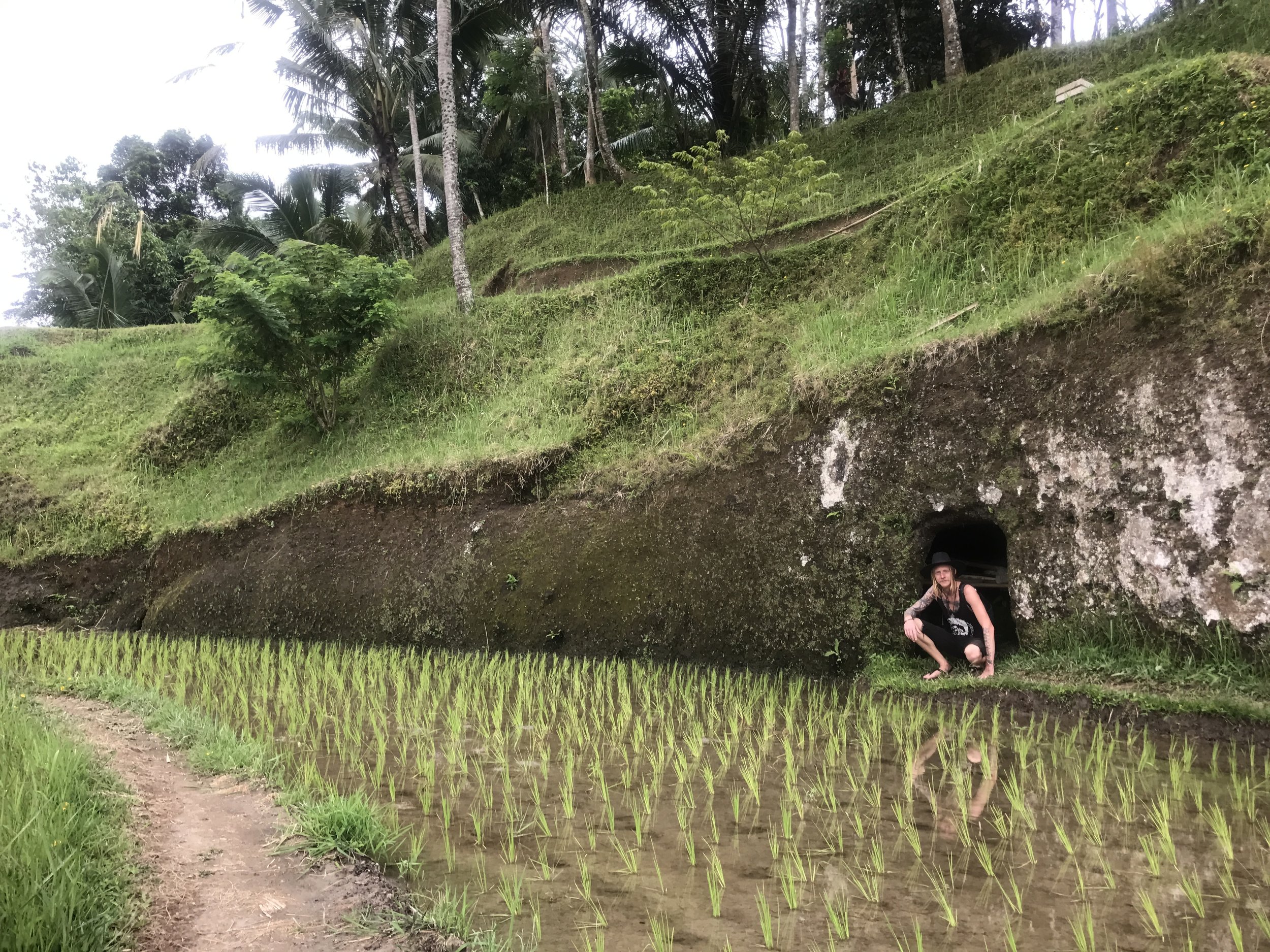Indonesia
Ubud is a bustling city in the heart of Bali, abuzz with merchants and markets, temples, spas, yoga studios and retreats, co-working spaces, health food, arts, culture and innovation, all surrounded by some of Bali’s greatest natural attractions. The city has become a haven for travelers, especially yogis and digital nomads, and is really a must visit when in Bali. Below are some of our favorite places in and around Ubud, with our travel tips learned along the way.
Getting There
Ubud is inland and situated in the southeastern part of the island, only an hour from the major airport in Denpasar, and the same distance from Canggu by car (where we stayed prior to our visit). Though the drive can be upwards of an hour and a half during rush hour. Growing up driving in New York and Boston, we have to say that traffic in Bali is unlike anything we’ve ever experienced. Narrow and winding streets not built for the volume of traffic they currently support, many without traffic signals, flood with motorbikes and cars during the heaviest commuter times. The jostling stop and go of such a drive can be nauseating. Best to pack some anti-nausea precautions. We were always stocked on Fisherman’s Friend mints, which did the trick 95% of the time (and they’re pharmaceutical free, yay!). Nausea aside, we enjoyed the scenic ride through villages and forests on the way to the city once leaving the populated seacoast.
Where We Stayed
Chadley singing songs on the balcony at Bisma Jaya.
There are hundreds of hotels, bungalows, hostels, AirBNB’s and guesthouses to choose from in Ubud, which can be a bit overwhelming. We pored over accommodations until we discovered Bisma Jaya on AirBNB, a relatively new guesthouse that was almost too-good-to-be-true affordable, with a pool, free breakfast, a secluded, jungle feeling yet within walking distance to all the city has to offer. Most notably, it’s just a 10-minute walk to Ubud’s Sacred Monkey Forest Sanctuary, one of our main draws to the city.
We stayed at Bisma Jaya for about a week and loved it. We were lucky to have the guesthouse almost entirely to ourselves and enjoyed spending hours every day writing and playing music on our balcony overlooking the lush gardens backed into thick jungle. The location was even better than expected, truly tucked away from the hustle and bustle, yet right in the center of it.
Good to Know: After booking our stay we received a message from the owner through AirBNB saying she couldn’t accept payments through the site, and asked us to cancel our reservation. Through a series of messages our stay was guaranteed and we arranged to pay in cash on arrival. We were a bit nervous about the potential for misunderstanding, but our fears quickly dissipated when we met the friendly guesthouse manager, Made. However, to avoid this confusion, we recommend sending the guesthouse a direct message through Facebook to book a room.
Ubud’s Sacred Monkey Forest Sanctuary
The Monkey Sanctuary is home to 600 feisty Balinese monkeys, also known as long-tailed macaques. This sacred swath of forest is protected by a local village, features several ancient and active temples, and fantastical sculptures. It was so much fun to coexist with the monkeys for a few hours in their surreal surroundings. Read more about our visit to the Monkey Sanctuary here.
Tegallalang Rice Terraces
A 25-minute drive outside the city lies a Unesco World Heritage site: the lush and storied rice terraces of Tegallalang. Like the Sacred Monkey Forest, this is a busy tourist attraction, but large enough to find solitude. We felt transported to another place and time as we strolled through an intersecting maze of picturesque and tranquil rice paddies where a traditional form of agriculture has remained intact for over 1,000 years. After wandering up and down this vibrant valley we made our way to one of the many restaurants overlooking the terraces to sip on fresh lime infused coconuts before catching a cab back to our hotel. We enjoyed a pleasant ride through the rural outskirts of the city passing farms, temples and villages. Take a look at our article on what it’s like to visit Tegallalang.
See a Kecak Fire Dance
The modern Kecak Fire Dance has evolved from traditional trance rituals that feature an acapella male chorus. The dance was adapted in the 1930s by German artist Walter Spies, who was living in Bali at the time. Spies tailored the Kecak Dance to Ramayana, a Hindu epic poem that depicts the struggle of a divine prince rescuing his wife from a demon king. Kecak itself has been historically performed by groups of 150 or more men wearing traditional checkered Balinese sarongs repeatedly chanting ‘cak’ while carrying out a synchronized dance. It has roots in an exorcism trance-inducing dance called sanghyang. The first women’s kecak group began in 2006.
The dance is performed at temples throughout the city every week. You can even see it at the old palace downtown. We caught one at a nearby temple and were blown away by the hypnotic acapella paired with the fluidly orchestrated dance. The costumes were also original, depicting larger than life characters like a white monkey king. And of course, the finale in which one of the dancer’s kicks flaming coconut shells toward the audience was a thrill all its own. We highly recommend checking out this one-of-a-kind, affordable cultural experience.
More Local Jams
Below are a few extra tips to guide you through this electrifying city.
Yoga, Yoga, Yoga – Ubud is a yogi haven with an abundance of styles, studios and retreats to choose from. Way too many to count, with more are cropping up all the time. For a recent review of the city’s myriad of yoga studios check out this list by the Never Ending Voyage.
Green School Bali – Ubud’s Green School is a non-profit, K-12 private and international school focused on sustainability from its curriculum to the physical space. Travelers can make an appointment to tour the school and even apply to volunteer.
Hubud – There’s a ton of innovation happening in Ubud, which draws digital nomads from all over the world. Across the street from the Monkey Sanctuary, Hubud is a busy co-working space that’s open 24-hours and fully equipped for getting work done, including access to printers, meeting space, private rooms, a small kitchen, café, and a lovely green patio. Take a peak at their promo video for a look inside.
Kopernik – We sat down with Kopernik’s Chief Strategy Officer to learn about what this non-profit is doing to improve the lives of people in poverty. With products ranging from solar lights, to eco-friendly stoves, and water purification systems, Kopernik is helping people in the most remote regions of the planet through technologies that focus on energy, water, sanitation, agriculture, fisheries, health, education and women’s economic empowerment. Check out their work to learn about all the people they’ve reached. If you’re looking for even more inspiration, this video is for you.
Atman Kafé – Absolutely, one of our favorite restaurants in Bali! With careful attention to clean, healthy, delicious food, Atman Kafe's enormous menu is filled with organic, vegetarian, vegan, and gluten free goodies (they have meat, too). In Hindu philosophy, Atman means inner self or soul, and is defined as the spiritual life principle of the universe. True to it’s name, Atman Kafé definitely felt like it was on another level of awareness. We adored the watermelon salad, falafel beet balls, decadent smoothies and butter coffee.
Hike Mt. Batur – Mount Batur is an active volcano an hour and twenty minutes north of Ubud that’s famed for sunrise hikes.
Reality Check: Avoiding ‘Bali Belly’
What sounds kind of cute is actually an unpleasant right of passage many travelers endure in foreign lands, the dreaded stomach bug. A simple rule: don’t eat raw fruit or veggies washed in unfiltered water. We made a point of eating at health centric restaurants that boasted washing their salad greens in purified water, but the slightest slip up can really cost you! Takesumi activated bamboo charcoal and clay tablets work wonders for both avoiding and treating the symptoms. We cannot recommend these natural remedies enough. They were so effective we never had to use the heavy pills we brought along “just in case.”
Enjoy Your Visit!
It seems there’s something for everyone in Ubud, from the gorgeous rice terraces of Tegallalang, to taking in a fire dance, walking with primates in the Sacred Monkey Forest, or discovering the plethora of shops, restaurants, yoga studios and co-working spaces that make this city so exciting to explore.










